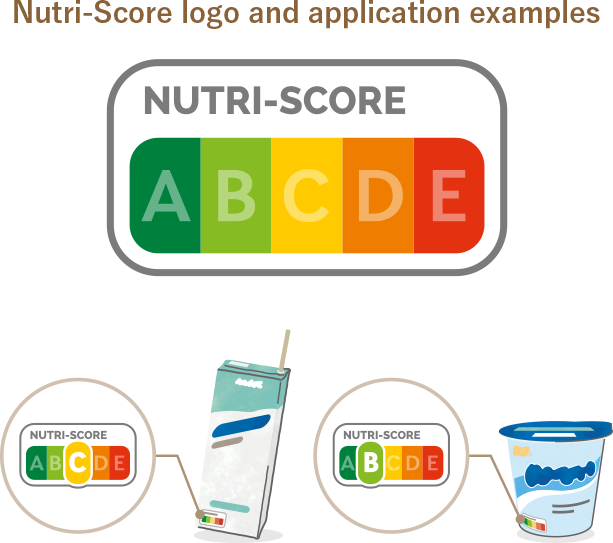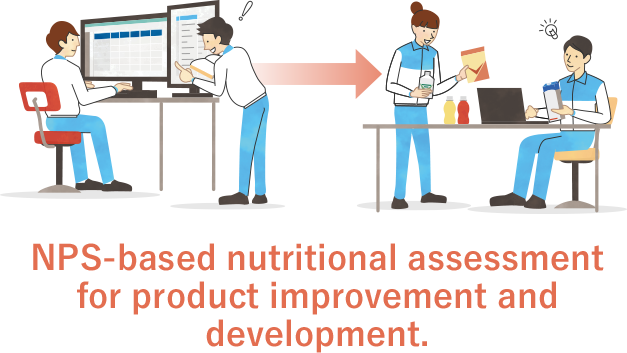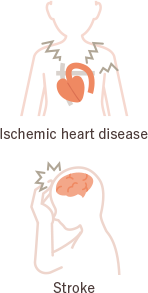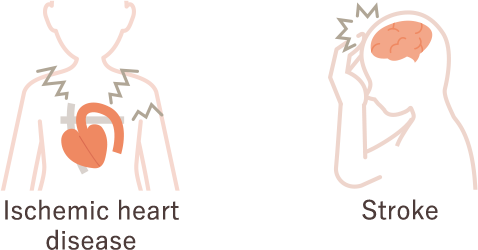Prof. Shoichiro Tsugane, M.D., Ph.D
(International University of Health and Welfare Graduate School of Public Health)
Important features of NPSs
(i) Definition of an NPS
It is thought that adequate nutritional intake can help solve many of the health issues resulting from overeating, unbalanced diets and nutrient deficiencies. However, the nutritional components of foods are diverse and complex. It is therefore very difficult for consumers to correctly understand the nutritional content of foods. In addition, it is also difficult to combine foods appropriately in order to consume a balanced diet. This is the point where the Nutritional Profiling Systems (NPSs) come into focus.
The WHO defines “nutrient profiling” as “the science of classifying or ranking foods according to their nutritional composition for reasons related to preventing disease and promoting health”. *1 The WHO then refers to the system of utilizing “nutrition profiling” as a “nutrition profiling model”, with the word “model” added. On the other hand, the term “Nutritional Profiling System”, with the word “system” added, refers to the entire broader approach, including models’, and is also becoming more common.
-
*1 World Health Organization. Use of nutrient profile models for nutrition and health policies: meeting report on the use of nutrient profile models in the WHO European Region, September 2021. No. WHO/EURO: 2022-6201-45966-66383. World Health Organization. Regional Office for Europe, 2022.
(ii) Importance of scientific evidence in NPSs
NPSs are a method that categorizes or scores foods according to their nutritional composition based on scientific data. Around the world, a variety of NPSs have been developed and used for different applications. The World Health Organization (WHO) therefore recommends that NPSs be designed according to the dietary culture and health issues of the target population.
NPSs can be flexibly designed based on different ideas. It is therefore important for us to validate the NPSs we design to ensure they are scientifically reliable. There are three representative NPSs: the Nutri-Score used in Europe, the Health Star Rating (HSR) used in Australia and New Zealand, and the Food Compass developed at Tufts University in the USA. These NPSs have been scientifically validated, and several papers have reported that the consumption of foods rated as having high nutritional value by these NPSs have a more positive effect on health. *2
When designing an NPS, it is important to confirm its validity and improve it when necessary. With the accumulation of new scientific evidence related to the NPS and regular updates and improvements made to the NPS, its validity becomes robust and its reliability increases.
-
*2 Barrett, Eden M., et al. "Criterion validation of nutrient profiling systems: a systematic review and meta-analysis." The American Journal of Clinical Nutrition 119.1 (2024): 145-163.


Use of Nutritional Profiling Systems
Two typical applications of NPSs are (i) providing nutritional information to the public (e.g. nutritional values on products) and (ii) use in product development.
(i) Providing nutritional information to the public
The WHO recommends a Front-Of-Pack Labelling (FOPL) approach, where the nutritional value of foods is displayed on the packaging in an easily understandable way. While discussions on the introduction of FOPL have only just begun in Japan, several countries have already taken the lead in implementing FOPL under the initiative of their governments. For example, in France, the NPS called Nutri-Score has been developed and is being used by the French government for the FOPL system (see figure below). The Nutri-Score ratings are calculated based on the nutritional composition, are classified from A (highest) to E (lowest), and a logo displayed on the packaging on the front of the product. Nutri-Score helps consumers to select products based on these logos, which in turn are based on nutritional value as determined by Nutri-Score. The results of the NPS are used as the basis for providing nutritional information in FOPL.


More detailed explanation
(ii) Usage in product development
The pleasure and satisfaction of eating well is a very important value of food. Nutritional value is also an important food value. The use of NPSs to scientifically assess the nutritional value of food products enables food companies to improve products by increasing their nutritional value or to develop new products with higher nutritional value. Several food companies have announced that they are using NPSs to assess the nutritional value of their products in order to offer healthier products.


The need to design NPSs tailored to specific targets
Nutrition-related health issues are largely dependent on over- and under-nutrition, as well as improper nutrient balance of diets. Nutritional issues vary from region to region, as over- and under-nutrition are strongly influenced by food culture and other factors. In addition, different life stages - children, adults, and the older populations - have different health issues that need to be addressed. Other factors such as race and economic status also affect nutrition-related health issues. In order to use NPSs to effectively address nutrition-related health issues, we need to design NPSs that are appropriate for the target population.


More detailed explanation
Supervising editor’s profile
Prof. Shoichiro Tsugane, M.D., Ph.D
International University of Health and Welfare Graduate School of Public Health
Graduated from the School of Medicine, Keio University in 1981 and studied public health at the Graduate School of Medicine at Keio University. After working as an assistant at Keio's School of Medicine, he joined the National Cancer Centre in 1986 and served as Director of the Center for Public Health Sciences. He then worked at the National Institute of Health and Nutrition from 2021 as Executive Director and Director of the National Institute of Health and Nutrition, before assuming his current position in 2023.



